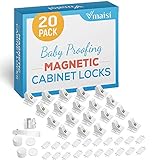Written Jonathan Rosenfled from Rosenfeld Injury Lawyers
Nobody is more aware of and in tune with the needs of a child than his or her parents, but there come times when it is necessary to trust others with their care. Day care services allow parents to work and take care of their personal commitments while ensuring their children are supervised and safe. However, it is still possible for children to be injured while they are under the care of others, so it is important that you are aware of how well your child care service is equipped to prevent and react to common emergencies.
How to Reduce the Risk of Child Care Accidents
By knowing the common pitfalls, you can properly vet those who you are trusting with the care of your child. No two child care centers are the same and some are more lacking than others when it comes to the implementation of policy that will keep children out of harm’s way. Consider the following when you are deciding what daycare center you want to trust with your child.
- What type of training do staff members undergo before being allowed to supervise children? Undertraining results in staff members being unaware of safety protocol and prevention measures that may prevent an accident.
- What is the caregiver to child ratio? Centers that have higher ratios are less equipped to keep an eye on every child. It is important that your child receive adequate supervision, or he or she may wander off or get into things he or she shouldn’t.
- Make sure the staff is properly trained in first aid and CPR. It is important for your own peace of mind to know that if your child does get into an accident, the caregivers are able to respond quickly and effectively.
- If your child needs to take medications, try whenever possible to avoid the need for those medicines to be administered by caregivers. If you cannot administer them at home, make certain that you bring the medicines to the center in their original containers and provide clear written instructions on how they should be taken. Make sure also to discuss allergy information and know where emergency supplies are stored.
- Inspect the center’s play areas and equipment to make sure that everything is clean and in good condition. Ask how often the equipment is sanitized to prevent the spread of disease and request inspection reports to see how the center has scored in the past.
- Make sure that your child is kept up to date on vaccines and that you do not bring him or her to the daycare center while he or she is sick. Reducing exposure is instrumental to keeping others from catching communicable diseases.
- Find out how the center handles food so that you are aware of whether there are any concerns over the spread of food-borne illnesses.
- Find out whether staff is required to undergo background checks. It is also important to discuss what measures are in place to prevent and detect abuse.
- Find out how well prepared the center is for an emergency. What are the procedures they follow in the event of a fire or a natural disaster? What supplies are on hand to protect staff and children?
The choice of who you trust to care for your children is more important than you realize, which is why you need to be extremely diligent and vet each potential care center before you decide who is qualified to watch after them. If you feel for any reason that a center lacks the child care safety measures to protect the children under their care, do not hesitate to look elsewhere.
Amazon Picks and Resources:







